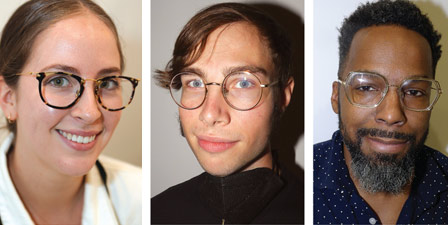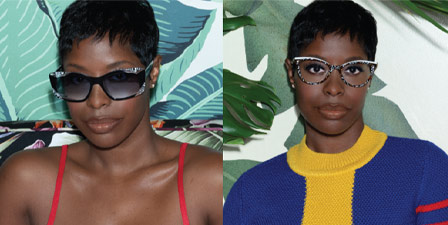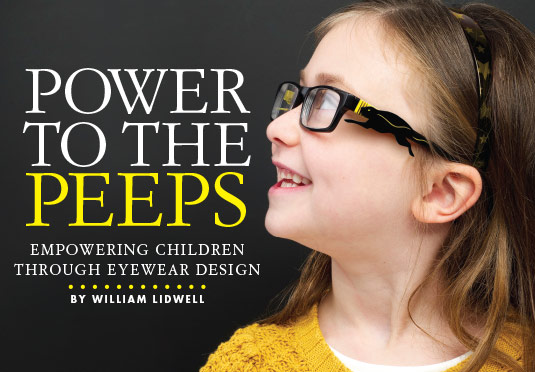
By William Lidwell
In the fall of 2012, I had the pleasure of observing a nonprofit organization provide free eye exams and eyewear to children at a disadvantaged elementary school in Detroit, Mich. The parents in attendance were grateful for the free eyewear—the children, not so much. In fact, you could say that the children were downright hostile to the whole affair. Parents and teachers tried their best to cajole the kids to try on their new glasses and experience the wonders of corrected vision, but little joy was to be had in downtown Detroit that day.
One mother’s appeal to her son epitomized the event: “See, your glasses look just like mommy’s. Isn’t that cool?” The little boy ripped the glasses from his face and growled back, “I don’t want to look like mommy!”
Why were the children so resistant to wearing glasses? And what, if anything, could be done about it?
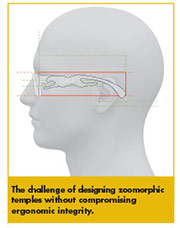 The answers to the first question seemed obvious to me: 1. There continues to be a stigma associated with wearing eyeglasses among young children, and 2. Children’s eyewear is essentially adult eyewear scaled down, and as a result, often fails to address the unique intellectual and emotional needs of pre-adolescent children.
The answers to the first question seemed obvious to me: 1. There continues to be a stigma associated with wearing eyeglasses among young children, and 2. Children’s eyewear is essentially adult eyewear scaled down, and as a result, often fails to address the unique intellectual and emotional needs of pre-adolescent children.
The answers to the second question, “What can be done about it?” were less obvious. I recruited a couple of former industrial design students to help research the problem. We named our R&D project “Oculus Rex” and have been hard at work for just over two years. The following are five key insights gleaned from our research, as well as examples of how we have explored applying these insights to the design of children’s eyewear.
CHILDREN LIKE ANIMALS
Given the choice between interacting with animals (e.g., lizards or hamsters) and toys, children almost always choose animals. Children are drawn to animals and animal-like (zoomorphic) forms. In fact, research supports the idea that humans, and children in particular, have an instinctive liking of nonhuman animals, an affinity supported both by evolutionary psychology and the ubiquity of zoomorphic cartoon characters. The challenge, of course, is figuring out how to leverage this affinity for zoomorphism into eyewear in a way that is unique enough to be appealing, but also familiar enough to be accepted. To make the frames familiar, we decided to leave the frame fronts alone and focus on the temples. The resulting designs look like traditional eyewear from the front and offer a delightful zoomorphic reveal when children turn their head.
 CHILDREN LIKE STORIES
CHILDREN LIKE STORIES
Stories are how children learn about the world—not only about how the world works physically, but also about its social customs, norms and moral standards. If you consider children’s eyewear not as the product, but rather as one element of a greater product experience, then stories can play a crucial role in their success. It is for this reason that we developed richly illustrated children’s books to accompany each of our zoomorphic temples. For example, the wolf temple is accompanied by the book Aralez: The Wolf King, which tells the story of how the great wolf king, Aralez, leads his pack to rescue a mountain people from monsters known as Narhval giants. Such stories bring the eyewear to life. It makes them more than pieces of plastic. They become artifacts of an experience that want to be displayed and shared with others.
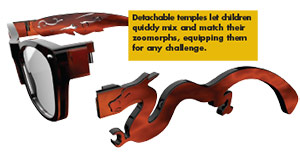
CHILDREN LIKE SECURITY OBJECTS
Security objects, sometimes called “attachment objects” or “comfort objects,” are things that give children a sense of security and relief from anxiety. Security objects are commonly associated with blankets and stuffed animals, but they can take many forms. We explored this psychology in our designs by giving each of our zoomorphs a special power, making sure to choose powers that represent common insecurities and aspirational abilities in children. For example, a child might aspire to be stronger, faster or smarter and could select their zoomorphs on this basis. In this way, the zoomorphs, with their stories and unique powers, are very similar to shamanic spirit animals and Native American totems, helping to support and guide their wearers through the trials and tribulations of daily life.
 CHILDREN LIKE TO CREATE
CHILDREN LIKE TO CREATE
Children seek control over their environments, and one healthy way to channel this desire is through the act of constrained creation. Constrained creation empowers children to be creative and explore, but within a set of carefully constructed constraints. The flexibility keeps it interesting. The constraints keep the interactions simple and safe. Such is the timeless appeal of toys like Legos. We explored constrained creation by making the temples detachable from the frame fronts, enabling children to easily mix and match zoomorphs. Math test on Tuesday? Configure the eyewear with zoomorphs for intelligence (Draco, the Dragon Elder) and creativity (Callida, Master of Rabbits). Soccer tryouts on Friday? Grab the zoomorphs for speed (Nico, Prince of Cheetahs) and strength (Leonidas, Lord of Lions). A variety of hinges were explored, from the satisfying snap of magnetic posts to the quiet fusings achieved with polymer connectors.
CHILDREN LIKE TO COLLECT
We refer to the hunter-gatherer instincts of children as the Pokémon principle: Children love to collect, classify and establish the pecking orders of things. Who wins a fight between Superman and Batman? Would a unicorn and a pegasus be friends or enemies? Collecting figures and indulging in these types of thought experiments are the best kinds of intellectual play, promoting both creativity and problem solving. So as with Pokémon, we envision an ever-expanding universe of zoomorphs. The notion is to create an ecosystem of eyewear, detachable components, companion storybooks and other supporting merchandise to immerse children in collecting, classifying and sharing activities. It is through these kinds of social and immersive activities that we recondition perceptions of eyewear and overcome long-held stigmas that hinder adoption.

The eyewear industry has made tremendous strides toward reversing stigmas and meeting the needs of children. My hope is that our research will further fuel this momentum for younger children and promote exploration of designs that seek to empower them not just ophthalmically, but also intellectually and emotionally.
William Lidwell is author of Universal Principles of Design and Deconstructing Product Design, and is director of design at Stuff Creators Design in Houston, Texas. Follow him on twitter @williamlidwell.



